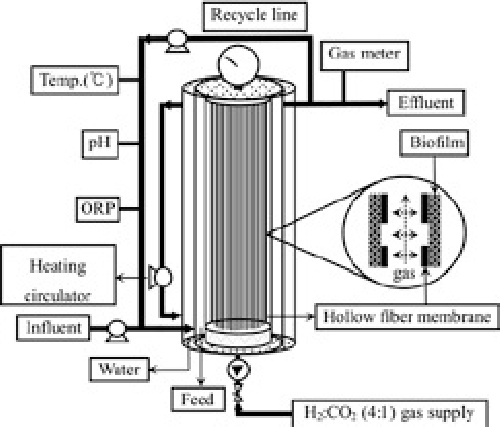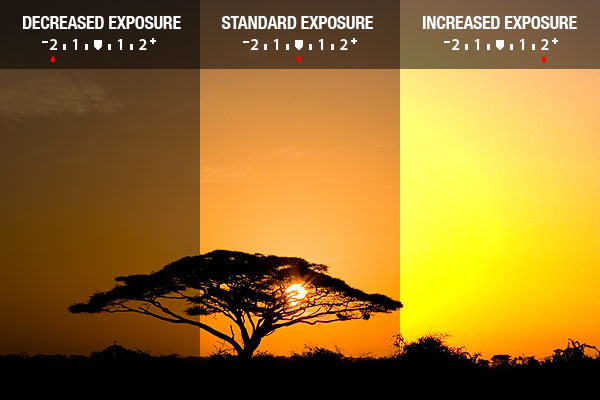مشخصات فایل
عنوان:
World War II
قالب بندی:پاورپوینت
پاورپوینت به صورت لاتین میباشد و دارای نقشه میباشد
تعداد اسلاید: 7
محتویات
GERMAN EXPANSION
•1933 – The Nazi Party came to power in Germany (the Third Reich forms). Hitler began to rebuild the military in direct violation of the Treaty of Versailles (secretly at first, and in public by 1935 – the Western democracies do nothing).
•March 1936 – Germans occupied the Rhineland with troops – again violating the Treaty of Versailles and again resulting in no reaction from the Western democracies.
•March 1938 – Austria was annexed by the Third Reich.
•Sept 1938 – Munich Agreement. Britain and France agreed to Hitler’s demands to ‘free’ oppressed German people that lived within the Czech Republic. German troops occupied the Sudetenland in the first weeks of October.
•March 1939 – Germany seized the remainder of western Czechoslovakia. The western democracies finally realized Hitler’s true intention of conquest. The southeastern portion became the Slovak Republic, allied with Germany.
•April 1939. Similarly, Italy invaded Albania and then become officially allied with Germany with the “Pact of Steel” in May.
•1 September 1939 Germany invaded Poland with two Army Groups. On 17 Sept the Soviet Union, who had previously signed a non-aggression agreement with Germany (Molotov-Rippentrop Pact: 23 August 1939) invaded and occupied eastern Poland. France and Britain declared war on Germany.
•27 September 1940. Tripartite Pact: The Axis Powers formally came into being. Germany, Japan and Italy signed this agreement to mutually support each other in their quest to conquer their spheres of influence. Hungary and Romania joined in November ’40 and Bulgaria joined in March 41.
•October 1939-April 1940. The ‘Phony War’. Germany built up forces to invade France while France established defenses behind her Maginot Line (a series of strong fortifications on the French-German Border). Since the Maginot Line did not extend beyond that border, the French positioned their more mobile forces, including the British Expeditionary Force, on the Belgium Border, which would cross that border should the Germans attempt a repeat of the Schlieffen plan they had executed at the beginning of WW I. This, the Dyer Plan, would meet and defeat any German attack trying to swing around the Maginot Line, through Belgium/Netherlands.
•9 April – German forces occupied Denmark
•9 April – June. Germans invaded Norway. These two actions protect the German trade routes with Sweden (Iron Ore) and assisted Germany to execute her future submarine campaign in the Atlantic.
•10 May 1940 – Battle of France. The Germans invaded the Netherlands and Belgium (bypassing the Maginot Line). Britain and France moved to counter this attack.
•German Army Group A (containing the majority of the Panzer Units) attacks through the Ardennes Forrest and cuts off two French Armies and the BEF from the rest of the French Forces. These troops either surrendered or were evacuated at Dunkirk.
•22 June – The Battle of France ends. After the disaster in the Low Countries, the French Army becomes almost totally ineffective, and the Germans easily attack through northern and eastern France. France surrenders and Vichy France was established, which is Southern France, Corsica and the French Colonies that now became essentially allied with Germany.
•July – October 1940. Battle of Britain. An attempt by Germany to gain air superiority, in order to invade Britain (Operation Sea Lion). The Germans failed and eventually called off the Operation.
NOT SHOWN: Sept 1940-Nov 1942: North Africa Campaign. A series of see-saw battles between German/Italian Forces (Libya) and the British (Egypt).
•October 1940. Italy attempted to invade Greece, but failed miserably. They actually lose half of Albania, and the British sent forces to defend Greece.
•April 1941. Germany goes to the aid of Italy by invading Greece, and consequently Yugoslavia when the Yugoslav government was overthrown, cancelling her previous agreement to allow the Germans to pass through their county.
•20-31 May 1941. Germany seized Crete with an almost purely Airborne Assault. They suffered such great losses, they never again conducted a major airborne assault.
•22 June – December 1941. Operation Barbarossa. Three German Army Groups attacked into the Soviet Union, but were finally stopped just short of Moscow by stiff Soviet resistance, strategic overreach and the winter.
NORTH AFRICA AND ITALY
•8 November 1942: Operation Torch. Knowing that they are not yet strong enough for a direct assault into Europe, but realizing they must attack somewhere, the Allied Combined Chiefs of Staff decided to attack North Africa to assist the British 8th Army destroy the German/Italian Forces that were fighting in the vicinity of Egypt. At three landing sights, the Allies landed in Morocco and Algeria and quickly defeat the Vichy forces there.
•10 November 1942: Germans occupied Southern France and Corsica as the Vichy government began to topple (due to defections in N. Africa).
•November 1942 – The allies advanced toward Tunisia to seize critical supply ports. However, the Germans rushed troops into Tunisia from Italy/Sicily and form the 5th Panzer Army. The Germans successfully halted the Allied advance just short of their goal. The British 1st Army was now forced to go on the defense and wait for supplies and reinforcements to arrive from their very long supply lines, as well as wait for better weather. A French and American Corps occupied positions to the south of the main British Corps. In early February, Panzer Army Afrika (Rommel) arrived in Tunisia after being driven from Egypt by the 8th Army.
•Rommel proposed that the combined German Armies attack the weak allied right flank to attempt to cut the 1st Br Army from its supply lines prior to the 8th Army’s arrival in force.
•Feb 1943. Battle of Kasserine Pass: This battle was a tactical defeat for the Americans, but an operational failure for the Germans who are unable to follow up on their initial success. The 8th Army finally arrived in force and the two German Armies surrendered in May 1943.
With the Allies still unprepared to invade Europe, a decision was made at the Casablanca Conference to attack into Sicily (the decision to invade Italy was made with the success of the Sicilian operation)
• 10 July 43: 15th Army Group (AG) with the US 7th Army (Patton) and the British 8th Army (Montgomery) invade Sicily (Operation Husky). 505th Parachute Regt (82nd Airborne Division) and 1st British Airborne Division assist.
•10 July – 17 August 43: Sicily was conquered. The US 7th Army attacked up the western side of the island, protecting the flank of the British 8th Army that attacked up the eastern side. The Germans were able to evacuate much of their men and equipment.
•3 Sept 43: British 8th Army invaded the ‘toe’ of Italy as a diversion (Operation Baytown). The US 5th Army (Clark) then made the Allied main amphibious assault (Operation Avalanche) at Salerno on 9 September, while the 1st British Airborne Division conducted a supporting amphibious assault (Operation Slapstick) at the ‘heel’ of Italy. Salerno was a very difficult operation for the allies, but poor German coordination resulted in a successful invasion.
•Just prior to the Salerno invasion, Italy surrendered to the Allies. This was announced during the invasion to create havoc for the Germans. The Germans, however, had anticipated this capitulation and rapidly disarmed the Italian forces.
•16 Sept – 8 Oct 43: Movement to the Gustav Line. The British 8th Army linked up with the US 5th Army by 16 Sept and the Germans (under Luftwaffe Field Marshall Kesselring) withdrew to and held the Gustav line by 8 October.
•July-Nov 43: After two failed German offensives (Stalingrad in 1942 and Kursk in July 1943), the Soviet Union begin the 1st of their major offensives to push the Germans back to Germany. This offensive occurred along the majority of the eastern front and reached the Dnieper River.
و . . .
عنوان:
World War II
قالب بندی:پاورپوینت
پاورپوینت به صورت لاتین میباشد و دارای نقشه میباشد
تعداد اسلاید: 7
محتویات
GERMAN EXPANSION
•1933 – The Nazi Party came to power in Germany (the Third Reich forms). Hitler began to rebuild the military in direct violation of the Treaty of Versailles (secretly at first, and in public by 1935 – the Western democracies do nothing).
•March 1936 – Germans occupied the Rhineland with troops – again violating the Treaty of Versailles and again resulting in no reaction from the Western democracies.
•March 1938 – Austria was annexed by the Third Reich.
•Sept 1938 – Munich Agreement. Britain and France agreed to Hitler’s demands to ‘free’ oppressed German people that lived within the Czech Republic. German troops occupied the Sudetenland in the first weeks of October.
•March 1939 – Germany seized the remainder of western Czechoslovakia. The western democracies finally realized Hitler’s true intention of conquest. The southeastern portion became the Slovak Republic, allied with Germany.
•April 1939. Similarly, Italy invaded Albania and then become officially allied with Germany with the “Pact of Steel” in May.
•1 September 1939 Germany invaded Poland with two Army Groups. On 17 Sept the Soviet Union, who had previously signed a non-aggression agreement with Germany (Molotov-Rippentrop Pact: 23 August 1939) invaded and occupied eastern Poland. France and Britain declared war on Germany.
•27 September 1940. Tripartite Pact: The Axis Powers formally came into being. Germany, Japan and Italy signed this agreement to mutually support each other in their quest to conquer their spheres of influence. Hungary and Romania joined in November ’40 and Bulgaria joined in March 41.
•October 1939-April 1940. The ‘Phony War’. Germany built up forces to invade France while France established defenses behind her Maginot Line (a series of strong fortifications on the French-German Border). Since the Maginot Line did not extend beyond that border, the French positioned their more mobile forces, including the British Expeditionary Force, on the Belgium Border, which would cross that border should the Germans attempt a repeat of the Schlieffen plan they had executed at the beginning of WW I. This, the Dyer Plan, would meet and defeat any German attack trying to swing around the Maginot Line, through Belgium/Netherlands.
•9 April – German forces occupied Denmark
•9 April – June. Germans invaded Norway. These two actions protect the German trade routes with Sweden (Iron Ore) and assisted Germany to execute her future submarine campaign in the Atlantic.
•10 May 1940 – Battle of France. The Germans invaded the Netherlands and Belgium (bypassing the Maginot Line). Britain and France moved to counter this attack.
•German Army Group A (containing the majority of the Panzer Units) attacks through the Ardennes Forrest and cuts off two French Armies and the BEF from the rest of the French Forces. These troops either surrendered or were evacuated at Dunkirk.
•22 June – The Battle of France ends. After the disaster in the Low Countries, the French Army becomes almost totally ineffective, and the Germans easily attack through northern and eastern France. France surrenders and Vichy France was established, which is Southern France, Corsica and the French Colonies that now became essentially allied with Germany.
•July – October 1940. Battle of Britain. An attempt by Germany to gain air superiority, in order to invade Britain (Operation Sea Lion). The Germans failed and eventually called off the Operation.
NOT SHOWN: Sept 1940-Nov 1942: North Africa Campaign. A series of see-saw battles between German/Italian Forces (Libya) and the British (Egypt).
•October 1940. Italy attempted to invade Greece, but failed miserably. They actually lose half of Albania, and the British sent forces to defend Greece.
•April 1941. Germany goes to the aid of Italy by invading Greece, and consequently Yugoslavia when the Yugoslav government was overthrown, cancelling her previous agreement to allow the Germans to pass through their county.
•20-31 May 1941. Germany seized Crete with an almost purely Airborne Assault. They suffered such great losses, they never again conducted a major airborne assault.
•22 June – December 1941. Operation Barbarossa. Three German Army Groups attacked into the Soviet Union, but were finally stopped just short of Moscow by stiff Soviet resistance, strategic overreach and the winter.
NORTH AFRICA AND ITALY
•8 November 1942: Operation Torch. Knowing that they are not yet strong enough for a direct assault into Europe, but realizing they must attack somewhere, the Allied Combined Chiefs of Staff decided to attack North Africa to assist the British 8th Army destroy the German/Italian Forces that were fighting in the vicinity of Egypt. At three landing sights, the Allies landed in Morocco and Algeria and quickly defeat the Vichy forces there.
•10 November 1942: Germans occupied Southern France and Corsica as the Vichy government began to topple (due to defections in N. Africa).
•November 1942 – The allies advanced toward Tunisia to seize critical supply ports. However, the Germans rushed troops into Tunisia from Italy/Sicily and form the 5th Panzer Army. The Germans successfully halted the Allied advance just short of their goal. The British 1st Army was now forced to go on the defense and wait for supplies and reinforcements to arrive from their very long supply lines, as well as wait for better weather. A French and American Corps occupied positions to the south of the main British Corps. In early February, Panzer Army Afrika (Rommel) arrived in Tunisia after being driven from Egypt by the 8th Army.
•Rommel proposed that the combined German Armies attack the weak allied right flank to attempt to cut the 1st Br Army from its supply lines prior to the 8th Army’s arrival in force.
•Feb 1943. Battle of Kasserine Pass: This battle was a tactical defeat for the Americans, but an operational failure for the Germans who are unable to follow up on their initial success. The 8th Army finally arrived in force and the two German Armies surrendered in May 1943.
With the Allies still unprepared to invade Europe, a decision was made at the Casablanca Conference to attack into Sicily (the decision to invade Italy was made with the success of the Sicilian operation)
• 10 July 43: 15th Army Group (AG) with the US 7th Army (Patton) and the British 8th Army (Montgomery) invade Sicily (Operation Husky). 505th Parachute Regt (82nd Airborne Division) and 1st British Airborne Division assist.
•10 July – 17 August 43: Sicily was conquered. The US 7th Army attacked up the western side of the island, protecting the flank of the British 8th Army that attacked up the eastern side. The Germans were able to evacuate much of their men and equipment.
•3 Sept 43: British 8th Army invaded the ‘toe’ of Italy as a diversion (Operation Baytown). The US 5th Army (Clark) then made the Allied main amphibious assault (Operation Avalanche) at Salerno on 9 September, while the 1st British Airborne Division conducted a supporting amphibious assault (Operation Slapstick) at the ‘heel’ of Italy. Salerno was a very difficult operation for the allies, but poor German coordination resulted in a successful invasion.
•Just prior to the Salerno invasion, Italy surrendered to the Allies. This was announced during the invasion to create havoc for the Germans. The Germans, however, had anticipated this capitulation and rapidly disarmed the Italian forces.
•16 Sept – 8 Oct 43: Movement to the Gustav Line. The British 8th Army linked up with the US 5th Army by 16 Sept and the Germans (under Luftwaffe Field Marshall Kesselring) withdrew to and held the Gustav line by 8 October.
•July-Nov 43: After two failed German offensives (Stalingrad in 1942 and Kursk in July 1943), the Soviet Union begin the 1st of their major offensives to push the Germans back to Germany. This offensive occurred along the majority of the eastern front and reached the Dnieper River.
و . . .
پاورپوینت













